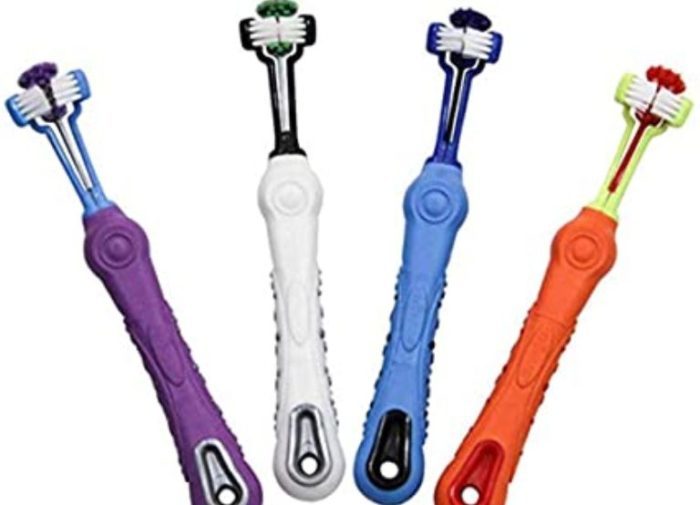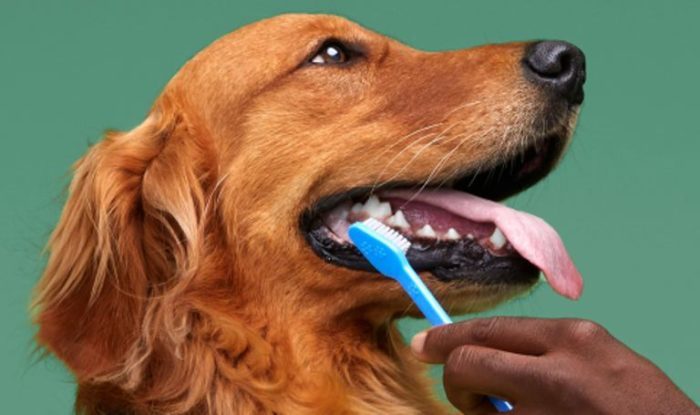Brushing your dog’s teeth is distinct from what is obtainable in brushing the teeth of humans. For one, dogs need to get used to teeth brushing before you can successfully brush their teeth. Secondly, you may need to use a different set of tools as there are special toothbrushes and toothpaste exclusively designed for canines. Before you even venture to put toothpaste into a dog’s mouth, you must give it a little to taste then watch its reaction and proceed if the dog doesn’t display negative reactions.
Table of Contents
Why is it necessary to brush your dog’s teeth?
Once dogs attain three years of age and above, it is generally assumed that some of them are likely to have periodontal disease which is an infection or inflammation of the surrounding tissues in the teeth. Majorly caused by plaque or tartar, periodontal diseases normally start as gingivitis and as it progresses, it will involve the bony sockets. If not treated, periodontal disease can result in painful tooth loss. Also, the pup can develop bad breath, gum disease, and tooth decay. Again, when the painful infection becomes severe it may likely spread, leading to life-threatening conditions.
How often should A dog’s teeth be brushed?
Teeth brushing in dogs is not the same as in humans as you will need to train your dog to get used to the brush and the taste of the toothpaste. However, once your dog gets acclimatized to brushing, teeth brushing time will not give you issues as the dog will even begin to enjoy it. Ideally, a dog’s teeth can be brushed daily but not every pet parent will be able to manage this. Thus, the experts recommend three times per week brushing as the minimum number of times to brush a dog’s teeth in order to prevent tartar buildup as much as possible.
The secret about brushing a dog’s teeth is to teach it to accept toothbrushes and toothpaste from the puppy stage. However, those that adopted adult dogs will still continue trying but it will take longer. Below are the steps to take while brushing your dog’s teeth;
Find the right time
You cannot just barge in and start brushing a dog’s teeth, you will have to observe the pup and target when it is calm and relaxed
Gather your tools together

While brushing your dog’s teeth, be sure to use the special toothbrush exclusively made for dogs with soft and specially angled bristles. If your pup is under 30 pounds, you may want to ditch the toothbrush and try finger brushing. If your dog is of a larger size, use a toothbrush with a longer handle to get a better reach. Just like the toothbrush, there is also special toothpaste made exclusively for canines in dog-friendly flavors such as poultry and peanut butter. Human toothpaste should be avoided at all costs as it contains some ingredients considered to be harmful to a pup’s stomach. Once you have gathered all these tools, you can start brushing your dog’s teeth.
Assume the position
When you are ready with all your teeth brushing tools, take the dog to the spot where it is most comfortable. Avoid standing above the dog, holding it down, or taking a threatening stance. The best thing is to bring yourself down to the dog’s level by either kneeling or sitting by the side or in the front. Before you commence, try gauging the canine’s anxiety level – stop if you notice any sign of distress and try at a better time.
Get their gums ready
Rub your fingers along the dog’s upper teeth and gum, this will show how willing the dog is to have its teeth brushed. At the same time, it assists the dog to get used to the sensation of something touching their teeth. You may not brush the dog’s teeth at the first trial, this process may have to continue over time until you feel the dog is ready to receive the toothbrush.
Test the toothpaste
Spew a little toothpaste on your finger and give the dog to taste; this way, it will become acclimatized to the taste and texture. If it happens that your dog rejects one toothpaste after the first taste, then you can try a different flavor and see what happens. Continue changing flavor until you discover the one that will be like a treat to the dog.
Try the toothbrush
You only start brushing your dog’s teeth when it has gotten used to the sensation of something touching its teeth and gum. Then it is time to introduce the brush with the toothpaste it has accepted. Follow these steps;
- Lift the dog’s upper lip
- While approaching its teeth with the toothbrush, try angling the bristles in such a way that they will be reaching the gum line
- Placing the bristles at a 45-degree angle against the pup’s teeth will help them massage the gum line, clearing away as much plaque as possible
Use a circular motion
While brushing your dog’s teeth, be sure to use a circular movement, getting to the top and bottom of one side at a time. If you notice slight bleeding while brushing, there is no cause for alarm as this is considered ok. However, when the bleeding is heavy and continuous, then it may be an indication that you are brushing the pup’s teeth aggressively or a sign of gum disease. In that case, a vet can be consulted.
Read Also: 10 Stubborn Dog Breeds You Need To Look Out For
Focus on the plaque build-up
Take on a few teeth and brush, then work up to more as the days roll by, brushing your dog’s teeth is quick work that shouldn’t exceed a couple of minutes. If your canine friend shows signs of resistance at the initial time, then, you can start from the outer part of the canine and the back teeth; this is exactly where tartar or plaques tend to collect more. If it is possible to get to the inside of the teeth, fine, but if not, just let it be since the dog’s coarse tongue does a good job of keeping the area clean.
Be reassuring
While brushing your dog’s teeth, try to keep the mood very light. Try talking to the dog in a soft voice, explaining what is happening. Pat the dog’s head, stroke its jowls and remind it how good a dog it has always been.
End it all on a positive note
At the end of the teeth brushing session, be sure to reward your pooch for good behavior with extra attention, praises, and treats.
